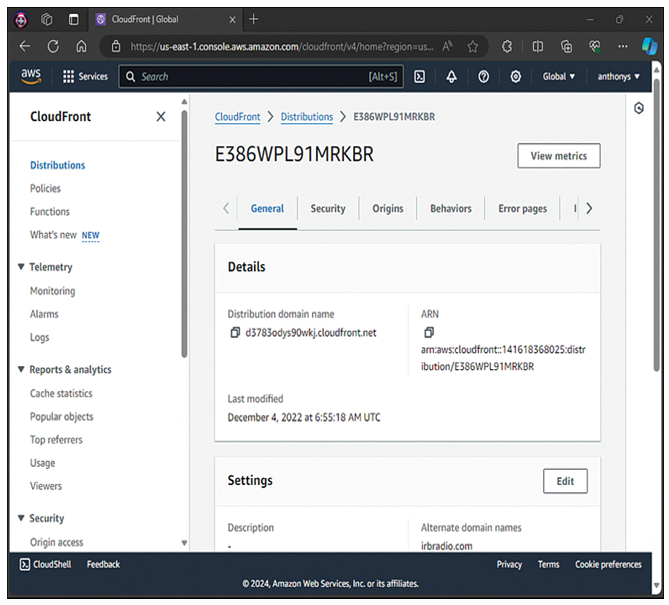Other Network Services
While there are many other network services in AWS, two of the ones you need to be familiar with are discussed in this section: Route 53 and CloudFront. Each performs critical functions that you need to understand.
Route 53
Amazon Route 53 is a highly available and scalable cloud Domain Name System (DNS) web service. Route 53 is capable of many valuable functions. Here are just some of its capabilities:
Route 53 effectively directs user requests to infrastructure running in AWS, such as EC2 instances, ELB load balancers, or S3 buckets.
Route 53 can be used to route users to infrastructure outside of AWS.
You can use Route 53 to configure DNS health checks to route traffic to healthy endpoints or to monitor the health of an application and its endpoints independently.
You can use Route 53 to register and manage domain names.
You can use Route 53 to enact routing policies in order to control how traffic is distributed among your AWS resources. Options for routing policies include simple routing, weighted routing, latency-based routing, and geolocation-based routing.
Route 53 supports Domain Name System Security Extensions (DNSSEC). These extensions add an additional layer of security by signing DNS data with cryptographic signatures.
CloudFront
AWS CloudFront is a global content delivery network (CDN) service for static and dynamic web content. This service accelerates delivery of your websites, APIs, video content, and other web assets. The service automatically routes requests for your content to the nearest Edge Location, so it delivers content with the best possible performance. Remember that Edge Locations, which are part of the AWS global infrastructure, are designed to help distribute content with more global coverage. Figure 15-2 shows AWS CloudFront distribution in the AWS Management Console.

Figure 15-2 An AWS CloudFront Distribution
Other features of AWS CloudFront include the following:
CloudFront caches your web content at Edge Locations. This means subsequent requests for the same content can be served from the nearest Edge Location rather than from the origin server. This reduces latency and improves overall performance.
CloudFront supports SSL/TLS encryption to ensure secure communication between end users and the CDN. You can use your own SSL/TLS certificates or leverage AWS Certificate Manager (ACM) to obtain free certificates.
CloudFront can fetch content from various origin servers, including Amazon S3 buckets, EC2 instances, ELB, and custom HTTP servers. This flexibility allows you to use CloudFront with a wide range of AWS services.
You can control access to your content by using various authentication and authorization mechanisms, such as signed URLs or cookies, to allow only specific users or groups to access content.
Exam Preparation Tasks
As mentioned in the section “How to Use This Book” in the Introduction, you have a few choices for exam preparation: the exercises here, Chapter 22, “Final Preparation,” and the exam simulation questions in the Pearson Test Prep Software Online.
Review All Key Topics
Review the most important topics in this chapter, noted with the Key Topics icon in the outer margin of the page. Table 15-2 lists these key topics and the page number on which each is found.
